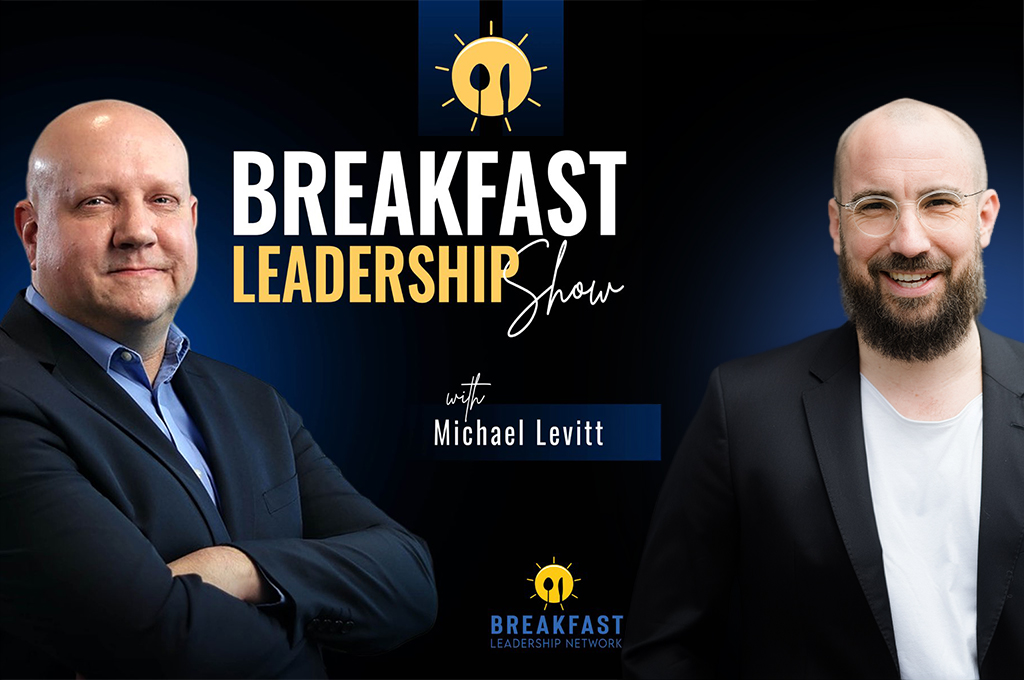When people ask why I teach embodied leadership, I often tell them: because I’ve lived the opposite.
Before founding Alive School of Embodied Leadership & Transformation in Berlin, I spent years in management consultancy and tech environments where high performance was the norm and so was exhaustion. I know firsthand what burnout feels like: sleepless nights, anxiety that hums beneath the surface, and slowly losing joy in the things that once gave life meaning.
That experience shaped everything I do today. My conversation on the Breakfast Leadership Show was an opportunity to reflect on how embodiment the practice of reconnecting with our physical and emotional selves can help us prevent burnout and lead with greater balance, authenticity, and vitality.
Understanding Burnout from the Inside
Burnout isn’t just about overwork; it’s about disconnection. We know we’re tired, yet we keep pushing. We know we need rest, yet we don’t slow down. In my coaching work, I see how many leaders live in their heads managing people and problems intellectually while ignoring what their bodies are trying to communicate.
In my own recovery, I had to relearn what it meant to listen to myself. Through Gestalt therapy, mindfulness, and somatic practices, I began noticing the early signs of stress tension, breath patterns, fatigue and how quickly they can spiral if left unchecked. This body awareness became the foundation of what I now call Embodied Leadership.
Integrating Emotions into Leadership
One of the most common challenges I see among leaders is the tension between professionalism and emotional authenticity. Many of us were taught to suppress emotions to stay “composed.” But that suppression comes at a cost.
In my coaching practice, I help leaders integrate emotions instead of denying them. Real composure doesn’t mean shutting down feelings it means understanding and expressing them in ways that are constructive and aligned.
This work is particularly important when supporting women in leadership, who often face added pressure to appear either strong or sensitive but rarely both. Leadership that honours emotional depth while maintaining clarity is not only possible, it’s powerful.
The Power of Self-Awareness
Everything begins with awareness.
When we become clear about what we value, what we need, and what truly matters to us, we start leading from alignment instead of reaction. For me, asking “why does this matter to me?” was a pivotal step in recovering from burnout and rediscovering meaning in my work.
Organisations often fear the vulnerability that self-awareness brings but the greater risk lies in avoiding it. When leaders don’t reflect, they lose connection to purpose. And when purpose fades, burnout follows.
The 4A Model: A Framework for Sustainable Leadership
To translate awareness into consistent practice, I developed the 4A Model Awareness, Attraction, Action, and Alignment.
- Awareness: noticing what’s happening in and around you
- Attraction: recognizing what draws your energy or attention
- Action: responding intentionally rather than reacting impulsively
- Alignment: integrating choices with your values and goals
This model supports leaders in regulating their energy and staying connected to what’s essential. I first tested it during my time at Daimler-Benz, where introducing reflective practices and external feedback sessions improved outcomes without expanding resources. The result was simple yet profound: greater awareness led to greater capacity.
From Burnout to Embodied Leadership
My path from burnout to embodied leadership wasn’t linear it was a process of unlearning. I had to move from controlling outcomes to sensing presence, from doing more to being more aware.
Today, through Alive School, I support leaders across industries from startups to global enterprises to sustain high performance without burning out. My work integrates psychology, neuroscience, and somatic practice to help people move from Führungsfrust (leadership frustration) to Führungslust (leadership joy).
If there’s one thing I’ve learned, it’s that preventing burnout begins with coming home to ourselves to the body, the breath, and the truth of what we need. When leaders embody that awareness, they don’t just lead differently they live differently.
Listen to my full conversation on the Breakfast Leadership Show here:
Spotify: https://open.spotify.com/episode/4ij3UK1IyKlHYX7Hn5zMgh?si=ln67suNuRbGMEhWJN-Vr0A
Learn more about Alive School of Embodied Leadership Fundamentals Training: https://alive.berlin/offerings/embodied-leadership-fundamentals/
More about the Breaktfast Leadership Show:
https://linkedin.com/in/michaeldlevitt
https://X.com/bfastleadership
https://www.instagram.com/bfastleadership/
https://youtube.com/@breakfastleadership?sub_confirmation=1
https://www.tiktok.com/@bfastleadership
